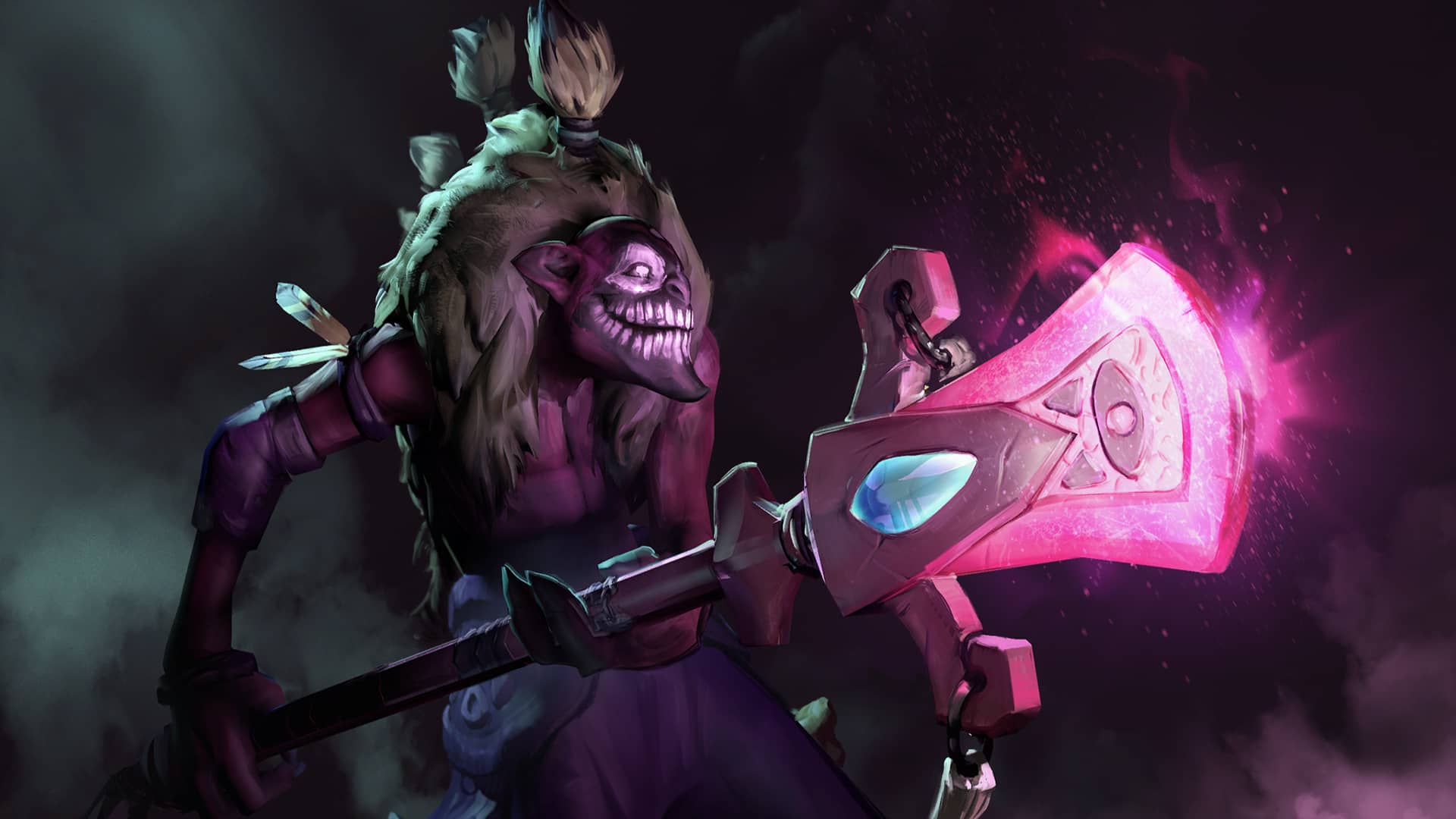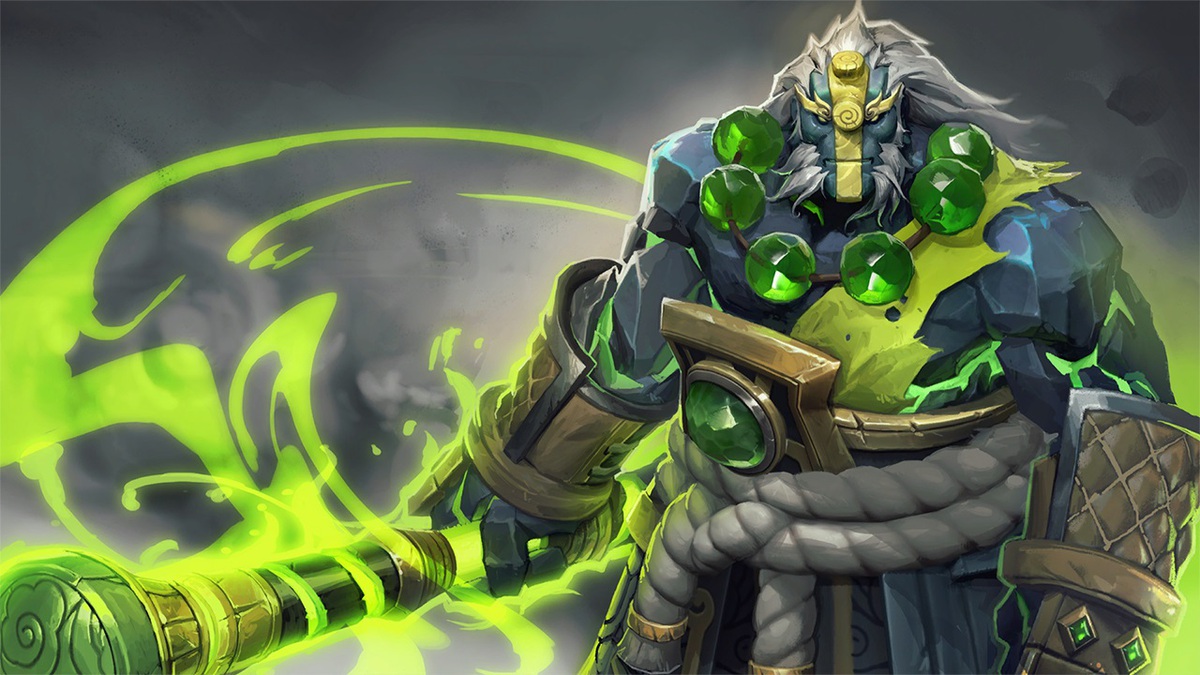The support role in Dota 2 has the lowest farm priority on the team. Supports are responsible for making sure their team’s cores – the carry and offlaner – have a comfortable laning phase. They need this in order to get the farm and experience that they need.
Playing support is not as simple as most make it out to be
Support heroes are blessed with powerful abilities, which are most useful in the early to mid game. They are able to impact the game even from the very start with their spells. They can even score kills kills in the laning phase, provided they have the right lane partners to synergize with. Some support heroes, on the other hand, are more defensive in nature. Their goal is to protect their cores or themselves more than to threaten their lane opponents.
Support strength in the early goings is balanced out by their relatively low survivability. Most support heroes in Dota 2 have low base armor and health values to start with. These characteristics combined with their disruptive natures make them high-priority targets in gank attempts and teamfights. Thus, necessitating that support players be careful with their positioning at all times. They are also designed to be less impactful in deep late game situations, as support heroes are not meant to carry games on their own unlike actual hard carries.
We’re here to teach you how to play this vital role properly and effectively.
Types of Support Heroes in Dota 2
Before getting into the basics of actually playing the support role, it’s important to distinguish the two classes. While both are considered support roles, the individual playstyles of each one differ slightly based on their kits and overall design.
Hard Support
Also known as “position 5”, the hard support in Dota 2 is the archetypal support role. Most players completely new to Dota 2 will get to know this role first. Hard support heroes are meant to have the lowest farm priority on their team. They’re also designed to scale with experience more than gold and items. Largely independent when it comes to equipment, these heroes can make their presence felt even with barren inventories.

They are quite strong in the first 15 minutes of the game. This is thanks to their powerful abilities that are strong on their own even without items. But, they tend to fall off later on in the game if they are unable to keep up in levels. Using their spells early on is the key to success. Whether to protect their lane partner or score kills on the enemy team.
Examples of hard supports include Lich, Jakiro, Crystal Maiden, and Disruptor. All of these heroes have a few things in common, but the most important one that they share is the ability to harass or even threaten to kill lane opponents with their spells right out of the gate. These heroes also have low skill floors, making them perfect for first time players.
Soft Support
Soft supports or “position 4” heroes in Dota 2 are higher up the farm priority compared to hard supports. Supports under this category are designed to be more item-dependent than their more frugal counterparts. This because their kits are often greatly augmented by pickups such as Blink Dagger, Force Staff, Pipe of Insight, and the like.

While these heroes will still give farm to their cores, they are tasked with coming online with their items sooner than hard supports. To this end, soft supports are usually blessed with the ability to roam the map early in order to score pickoffs while helping other lanes have an easier time. Some soft supports also have great flash farming spells with which they can reliably gather gold for their item timings.
Examples of soft supports include Rubick, Earthshaker, Earth Spirit, and Sand King. Earthshaker and Sand King, in particular rely quite heavily on Blink Dagger to initiate teamfights. Rubick and Earth Spirit are just so much better when they have things like Aether Lenses and Force Staffs.
Basics of Playing Support in Dota 2
Know Your Role
In all but a few edge cases, supports will step up to one of the side lanes in order to assist their corresponding cores in those lanes. Hard support heroes typically go to the safe lane to help the carry get their farm. Hard supports don’t need much gold to begin with, after all. This means that they are best suited to being in a lane where they can give all their farm to a core that really needs it. Soft supports on the other hand will want to go to the offlane. Offlaners can usually survive without having to be protected 24/7. And because offlaners can very easily give some farm to their supports, they still hit their item timings reasonably early.
Regardless of which lane you take, though, the most important parts of playing support are staying alive. You should also make sure that you don’t sap experience from your lane partner unnecessarily. Positioning and playing close to friendly creeps and/or the tier 1 tower is key to the first part. Doing so makes it more difficult for enemy heroes to dive you and your lane partner.
If you’re playing a ranged support, doing this is fairly easy. Use the paths off to the side in order to stay at arm’s length to your lane opponents. Do this while using the creep wave to draw the line indicating how far you can safely go. Try not to go past the creep wave unless your hero is built for that.
This isn’t to say that you shouldn’t ever take risks, though. Doing so can be very beneficial in certain situations. Like when your chosen hero synergizes really well with your partner in terms of spells and whatnot. Moreover, you can zone out certain opponents for a long time if you know where to place yourself in the lane. You can put some real fear into your opponents if you play aggressively. However, it is important to practice controlled and calculated aggression. Otherwise, you’re just going to feed the opposing core endlessly. Eventually they can and will leverage that to get a massive advantage in the early game.
When your death is inevitable, it’s often better to just stand your ground and try to take your enemies down with you. Use your spells before you kick the bucket! You never know what might happen, and you might enable your core to get a kill in the process.
Pull When Necessary
The best way to give your lane partner solo experience is to pull neutral creep camps so that they end up cutting your incoming creeps. In the safe lane, this is done with the easy camp closest to the tier 1 tower. In the offlane the only creep camp that can be pulled is the enemy hard camp closest to your own tier 1 tower. For the former, you’ll want to attack the camp at the first or third quarter of the minute that the game’s timer is currently on (i.e. 3:15 or 6:45). Then, use their aggro on you to make it so that the incoming creep wave sees them just at the right time. As for the offlane pull, attack with a delay of two seconds compared to the safe lane pull. This would be somewhere around the 17 or 47 second mark.
Doing this allows you to kill creep camps on your own as a support and denies gold and experience from your lane opponents. This is because a few of the creeps are likely to either die or get close to dying as a result of taking damage from the pulled camp. Thus effectively removing the gold and experience from the map before enemy heroes can get to them. This allows you to leave your lane partner alone to hit lane creeps. Which also results in solo experience for both of you.
Moreover, pulling helps reset creep equilibrium. If your creep wave is pushed too far towards the enemy tier 1 tower, it can be hard for your core to get creep kills. Since pulling creeps delays their arrival in the lane by a significant amount of time, the enemy’s creep wave will not stop going towards your tower until your own creeps have finished cleaning up the camp they were pulled to. This in turn makes it safer for you and your lane partner to operate in the lane itself, as you will have the tier 1 tower close by just in case your opponents decide to try anything funny on you.
Eagle Eyes
Wards are exceedingly important to success in Dota 2. You simply cannot survive without them. Supports have traditionally been tasked with buying and placing down wards (both Observer and Sentry Wards). And now, Observer Wards are free! So there’s no excuse to not get them whenever they come off cooldown in the shop.
Observer Wards replenish one at a time every two minutes and 15 seconds, and Sentry Wards every 85 seconds. Observer Wards are capped at four pieces, while Sentry Wards are capped at 10. You and the other support player on your team should try to keep the Observer Ward count below two at the very least. Ideally, it should never be off cooldown for too long. If you find that the Observer Ward count is always two or higher, you need to keep track of its availability better.
Having that many available means that your team isn’t making good use of the wards to begin with. This, in turn, means that you aren’t providing your team as much vision as you should be. Open the shop every now and then to check!
Secure Ranged Creeps (If Your Partner Can’t)
We cannot stress this point enough: spend mana to secure ranged creeps in the lane — especially if your lane partner is unable to. Melee heroes without ranged nukes of their own will often find this difficult. If you find yourself playing someone like Grimstroke or Lich (who have great long range nukes of their own), don’t hesitate to kill ranged creeps.
Seriously, allowing enemy heroes to deny ranged creeps is a big deal and will set you and your partner back significantly if it happens too often. The gold and experience from ranged creeps is simply too valuable to miss out on. So we suggest trying your best to get them as often as possible.
Of course, you don’t want to take unnecessary risks just to get this done. If you have to overextend by a large margin to secure a ranged creep or your lane opponents are big threats to your life, doing so may not be possible at all. At that point, it’s best to just be within experience range when the creep dies or gets denied. Losing your life and giving away gold to your lane opponents repeatedly just isn’t worth what you get from ranged creeps. Exercise due caution and keep your distance accordingly.
Which Support Heroes Should You Pick in Dota 2?
It’s actually sort of ironic that newbies are told to play support when learning Dota 2, considering how much the early game hinges on effective support play. Nevertheless, there are some heroes that are really easy to pick up and play in the support role.
Lich
Lich is a very basic hard support pick, which has decent base stats and a powerful early game kit. His Frost Blast (Q) serves as a great nuke in the laning phase, while his Frost Shield (W) enables aggressive play from the get-go.
Meanwhile, his Sinister Gaze (E) is a hard disable that can be cast from a fair distance away, and one that forces the target to start running towards Lich — and thus, his teammates. Chain Frost (R) is one of the most powerful teamfight Ultimates in the game, as it deals a ton of magic damage without putting Lich himself in much danger.
Jakiro
Jakiro wields the power of fire and ice to great effect. His presence in the lane is quite oppressive thanks to Dual Breath (Q) and Liquid Fire (E). Both deal significant amounts of damage over time to enemy units. Liquid Fire doesn’t cost any mana either, which makes it a very cheap but effective harassment ability.
Ice Path (W) freezes all units it comes into contact with, rendering them completely unable to act. It does have a long cast animation, though, so leading with it is important and can be difficult for new players to grasp. Still, his entire kit is excellent, glued together by his Ultimate Macropyre (R) — which lays down a long column of hellfire in a line in front of Jakiro. Any enemies caught standing in the fire will take a ton of damage over time, and discourages them from stepping over it to begin with.
Crystal Maiden
Crystal Maiden is the purest personification of a hard support. She is slow and extremely fragile, but her abilities more than make up for her weaknesses. Crystal Maiden is most valued for her passive skill Arcane Aura. This gives her and her teammates additional mana regeneration no matter where they may be on the map. Her aura alone enables aggressive spell-heavy strategies, especially in the laning phase when mana is at a premium.
The rest of her kit focuses on damage and disruption. Crystal Nova (Q) deals moderate magic damage over a large area, while slowing enemies caught in its wake. Frostbite (W) keeps enemies held in place for a few seconds, preventing their escape even if they have mobility spells at their disposal. Freezing Field (R) showers the battlefield with hail, slowing enemy units by a huge amount and dishing out tons of damage. Should her foes choose to fight under Freezing Field, they will also have to deal with the fact that it gives Crystal Maiden a whopping 20 bonus armor.
The support role in Dota 2 may be easy to pick up, but it is definitely hard to master. There are multiple facets to playing the role itself, and some of the best support players in the world definitely did not get there without putting in the hours to hone their craft.
When it all starts to click, though, the result is quite satisfying. Especially when your impact is felt by your team as a whole. Take our advice to heart, grind it out even when your cores are flaming you, and you’ll see the sweet fruits of your labor for sure!
P/S: If you are interested in our blog posts and has been looking for ways to improve yourself as a dota 2 player, you can take a fast quiz test to find out more about our coaching lessons here at vikingdota.com.


 Tài khoản Dota 2 Chính thức (Còn hàng)
Tài khoản Dota 2 Chính thức (Còn hàng) Dịch vụ cày đơn
Dịch vụ cày đơn Dịch vụ cày đôi
Dịch vụ cày đôi Coaching Services
Coaching Services Dota 2 Gift Only Items
Dota 2 Gift Only Items
Share:
Best dota 2 Heroes for new beginners
Flying Solo: How to play Mid in Dota 2